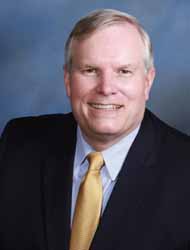

The economic and social burden of untreated hearing loss is astounding. Over 450 million people worldwide (40 million Americans) suffer from disabling hearing loss, and an aging population will cause that number to double by 2050. Hearing loss is a global health epidemic with an annual economic impact of $750 billion. 1
As recently as a decade ago, many health care providers didn’t recognize hearing loss as a significant issue. In fact, many physicians still consider hearing loss to be an expected consequence of normal aging. But that sentiment is rapidly changing. A growing body of epidemiological research has linked hearing loss to significant health problems such as dementia, depression, and increased hospital visits.2
In 2017, the Lancet reported that untreated hearing loss is the modifiable risk factor with the strongest association with dementia.3 That link was stronger than exercise, healthy diet, or memory exercises. Additionally, Medicare beneficiaries with hearing loss cost more to manage than their normal-hearing peers.
Despite these alarming statistics, only about 20% of patients who have disabling hearing loss have sought treatment. Reasons for this include:
1) stigma associated with hearing technology; 2) cost (Medicare doesn’t pay for hearing aids); 3) poor understanding of the associated health consequences; and 4) inadequate emphasis placed on hearing loss in the primary care setting. 4
Combined, these challenges severely limit access to quality hearing health care for millions of Americans (including Texans). Patients are too often forced to seek out hearing treatments themselves. They end up overpaying for hearing aids (in extreme cases up to $10,000) in settings that lack physician oversight and have variable quality.
We can and must do better for our patients
Like many areas of health care, hearing loss is best managed when hearing professionals collaborate closely with physicians. Primary care physicians (PCPs) are uniquely suited to manage hearing loss because 1) patients trust their PCP; 2) PCPs have insight into the overall health and well-being of their patients; and 3) the PCP workforce is large enough to make a meaningful impact. Accountable care organizations, clinically integrated networks, and patient-centered medical homes are perfectly suited to be a positive force in the hearing health of their patients.
Recently, a group of PCPs in North Texas decided to do just that. Tarrant county PCPs are organizing to bring innovative hearing solutions to their patients while creating economic opportunities for their practices. Here are some brief insights into some of their innovations:
1. In-office hearing screening: Hearing assessment has long been part of a comprehensive medical exam. However, many PCPs limited their hearing assessment to a “finger-rub” because affordable hearing screening tools didn’t
exist, or the time required to perform the screening was economically prohibitive. Tarrant county physicians are currently using a
Food and Drug Administration-approved, iPad-based screener to screen patients who are over the age of 55 and patients with a hearing complaint. This billable test takes two minutes, and it can be self-administered by patients while they wait to see their doctor.
2. Hearing aid purchasing groups: North Texas physicians created the nation’s first hearing aid purchasing group owned by PCPs (US Hearing Partners or USHP). This purchasing group is able to negotiate with device manufacturers for better pricing, which ultimately benefits patients through cost savings.
3. Partnerships with trusted hearing clinics: The expertise and cost involved with dispensing hearing aids are prohibitive for most PCPs. Instead, USHP physicians jointly use a trusted hearing clinic to support their patients. This clinic has physician oversight and stringent quality standards.
4. Hearing aid leasing: The average cost for a pair of programmable hearing aids exceeds $4,000. This cost covers the device as well as hours of work with a trained hearing professional to optimize the hearing aid to specifically meet the patient’s needs. Many patients simply cannot afford hearing aids, and insurance plans are slow to provide adequate coverage. To address this cost barrier, USHP offers affordable leasing options. Patients can have fixed, low, monthly payments while always having access to updated, modern hearing aids.
These are only a few of the innovative steps that Texas primary care physicians are taking to bring hearing solutions to their patients. Advances in science, innovation in technology, and changes in health care policy also are transforming the hearing health care landscape. The result is a unique and exciting opportunity for PCPs to promote the health and well-being of their patients. n
Jed Grisel, MD, is an otolaryngologist practicing at Texoma Hearing Institute in Wichita Falls.Greg Fuller, MD, is a family physician practicing at North Hills Family Medicine in Keller.
References
1. World Health Organization. https://www.who.int/news-room/fact-sheets/detail/deafness-and-hearing-loss#:~:text=Hearing%20loss%20and%20deafness,moderate%2C%20severe%2C%20or%20profound. Accessed 6/22/2020.
2. Besser J, Stropahl M, Urry E, Launer S. Comorbidities of hearing loss and the implications of multimorbidity for audiological care. Hear Res. 2018;369:3-14. doi:10.1016/j.heares.2018.06.008.
3. Livingston G, Sommerlad A, Orgeta V, et al. Dementia prevention, intervention, and care. Lancet. 2017;390(10113):2673-2734. doi:10.1016/S0140-6736(17)31363-6.
4. Gallagher NE, Woodside JV. Factors Affecting Hearing Aid Adoption and Use: A Qualitative Study. J Am Acad Audiol. 2018;29(4):300-312. doi:10.3766/jaaa.16148.
Tex Med. 2020;116(8):4
August 2020 Texas Medicine Contents
Texas Medicine Main Page